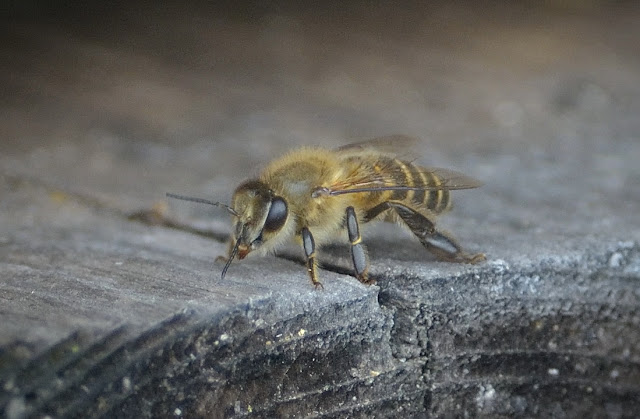If all ladybird beetles, テント虫 would come out on the same day of the year it would be on this day. They were everywhere, in various stages of their life cycle. You would not know they were all the same insect if there hadn't been anybody to explain.
The middle stage is called sanagi in Japanese サナギ
Somebody got very excited about these black less than a mm creatures that were gathered (deposited?) on the end of a stalk. She called them tsuchi hammyo, ツチハンミョウ or Blister Beetles.
Blister beetles are beetles of the family Meloidae, so called for their defensive secretion of a blistering agent, cantharidin. About 7,500 species are known worldwide. Many are conspicuous and some are aposematically colored, announcing their toxicity to would-be predators.Wikipedia
I myself was happy to see the first dragonfly of the year. ニホンカワトンボ, Japanese Kawatombo
And some of the common butterflies, ミヤマカラスアゲハ, Alpine black swallowtail
Benishijime, ベニシジメ, Small copper
Another Shijimi, but not blue. ???
Kurokonomacho, クロコノマチョウ, Dark evening brown. (I saw it at noon :-)
Everybody has their own interest. Some like snails. Tsushima kemaimai, ツシマケマイマイ, Aegista trochula
Or fungi.
And frogs of course! アマガエル, Japanese tree frog
We stopped to look at a beehive (or box, what is it called?) that was full of Japanese honey bees, ニホンミツバチ
I came back another day to take the time to capture a bee bringing in the pollen, as you can see. It's that yellow stuff on it's legs. (And it makes you sneeze) 花粉, kafun
Last but not least some of the wild flowers
There are so many kinds of wild violets in Japan. Somebody told me around 70! Impossible to know them all. This wild violet is Nyoisumire, ニョイスミレ. Viola verecunda
レンゲ, Chinese milkvetch. In May we can see big fields of these purple flowers. They are planted to add nutrition to the soil like a kind of manure. The insect is a Kumabachi, クマバチ, Carpenter bee.
The common name "carpenter bee" derives from their nesting behaviour; nearly all species burrow into hard plant material such as dead wood or bamboo. Wikipedia
Below: Murasaki keman, ムラサキケマン, Incised fumewort on the left
Matsuba unlan,マツバウンラン, Blue toadflex on the right
Kiku mugura, キクムグラ
Ooinu fuguri, オオイヌフグリ, Persian speedwell
Fuderindo, フデリンドウ a Japanese Gentian

































No comments:
Post a Comment